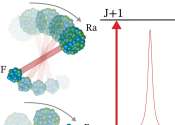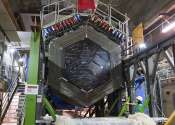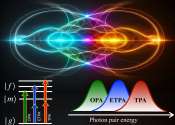How 'sticky' is dense nuclear matter?
Colliding heavy atomic nuclei together creates a fluidlike soup of visible matter's fundamental building blocks, quarks and gluons. This soup has very low viscosity—a measure of its "stickiness," or resistance to flow.









